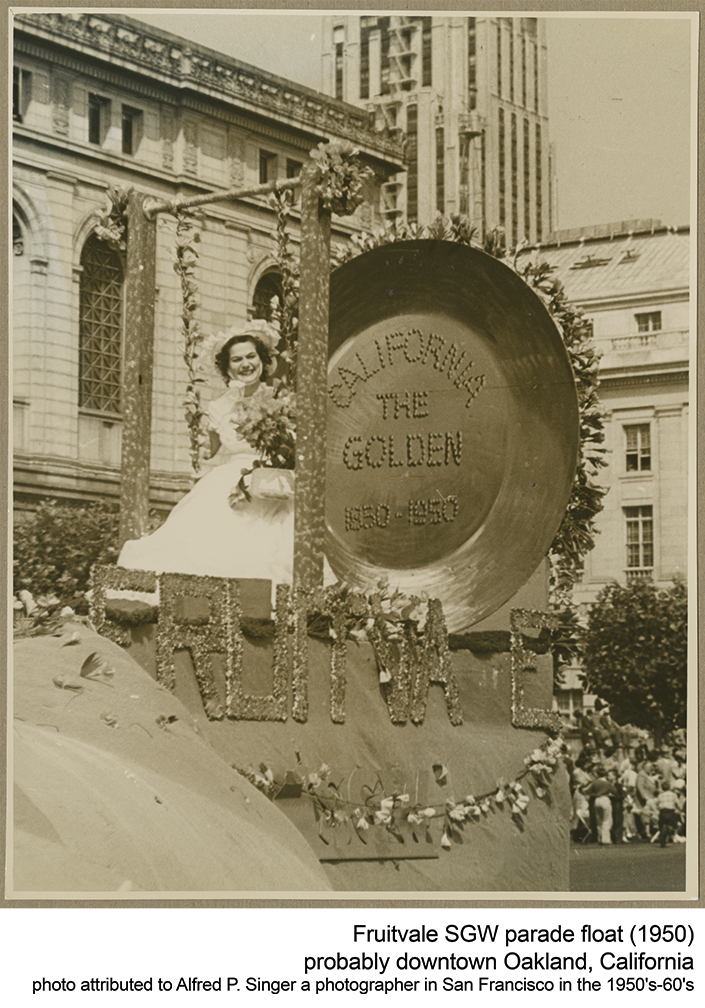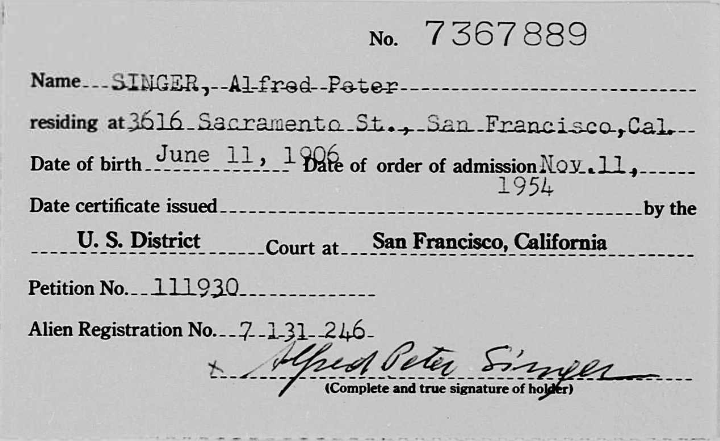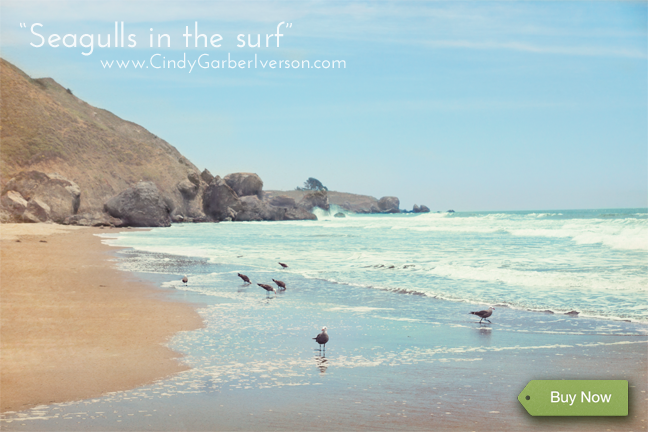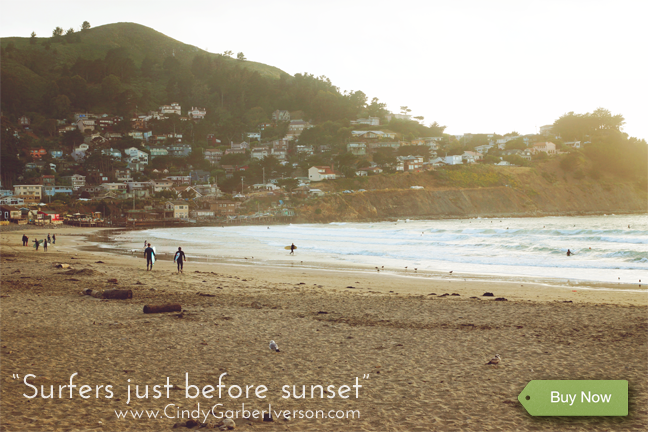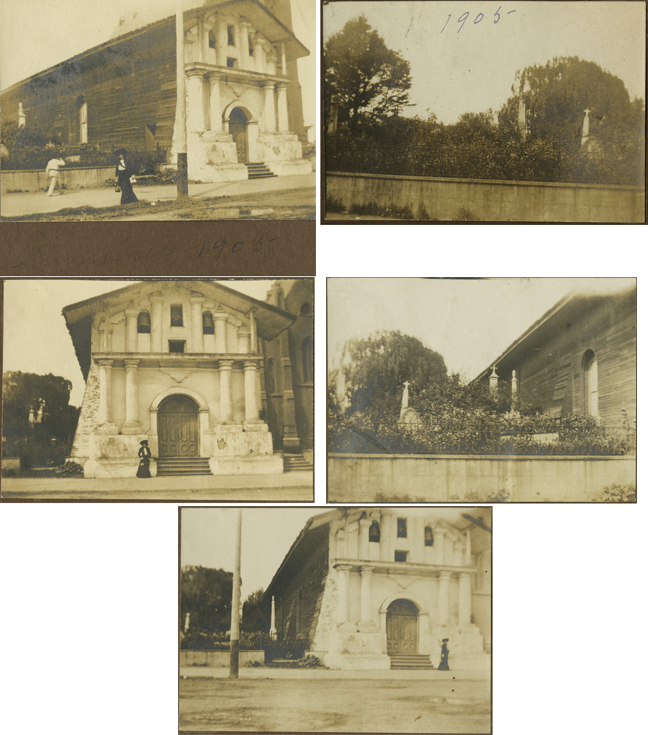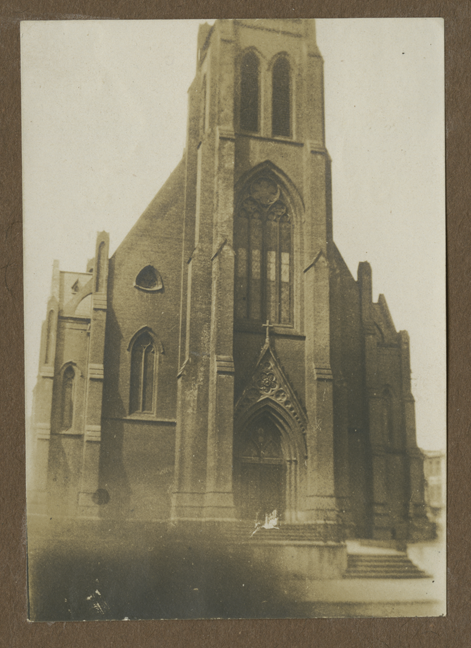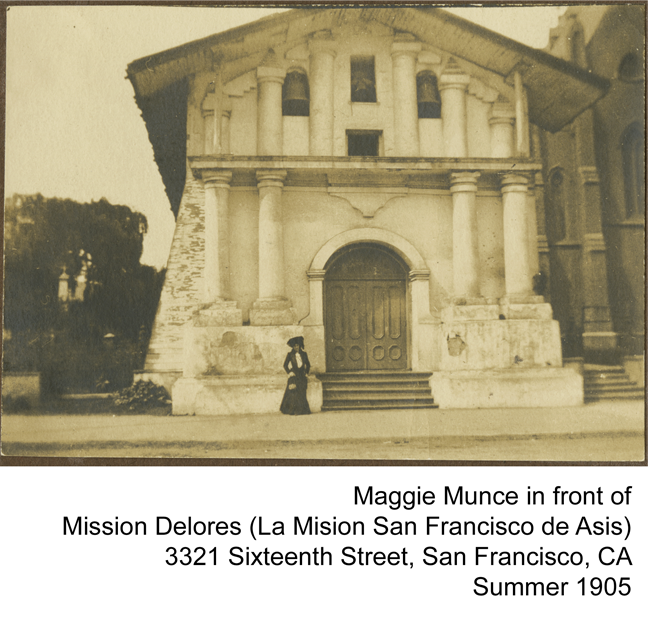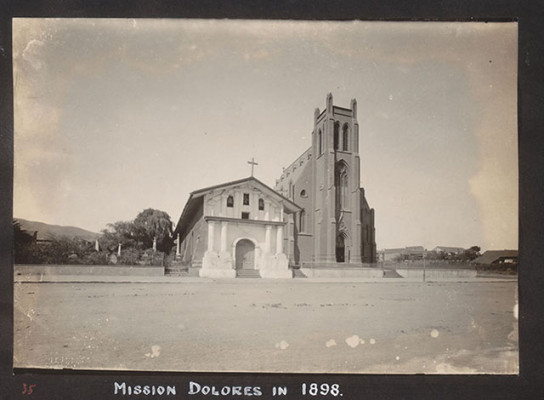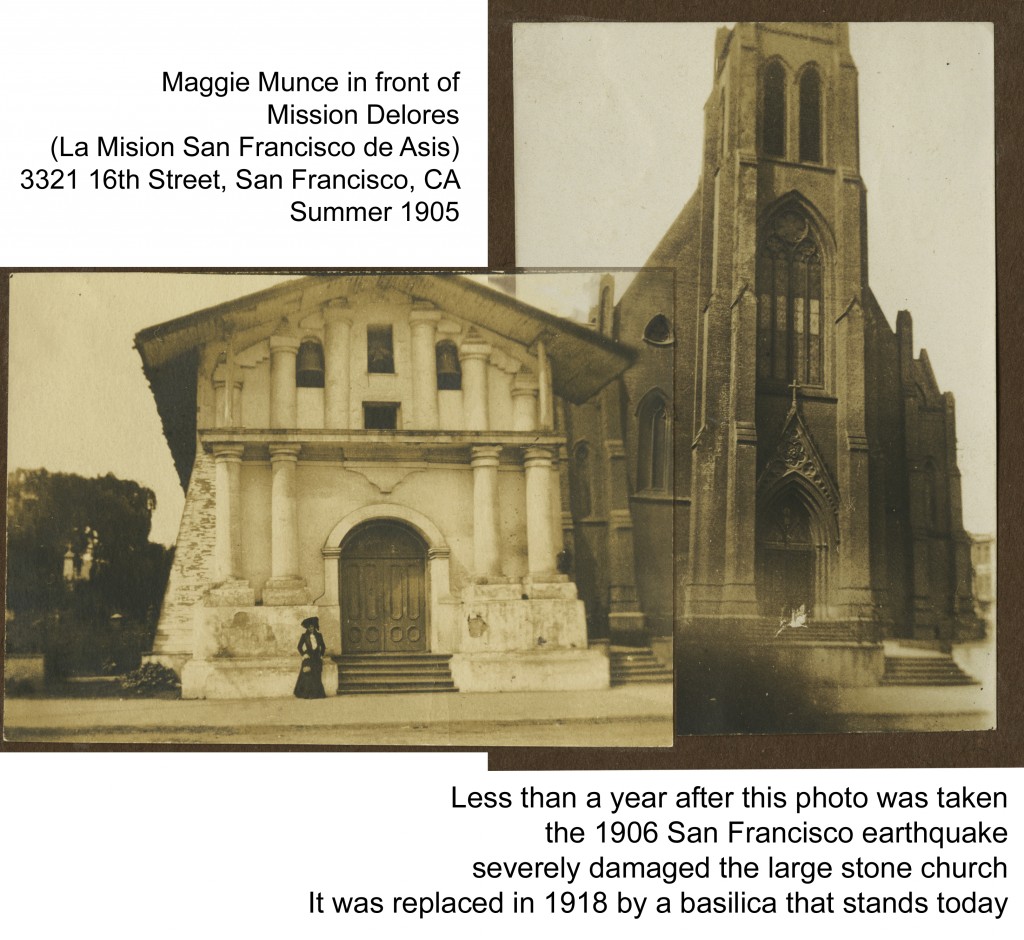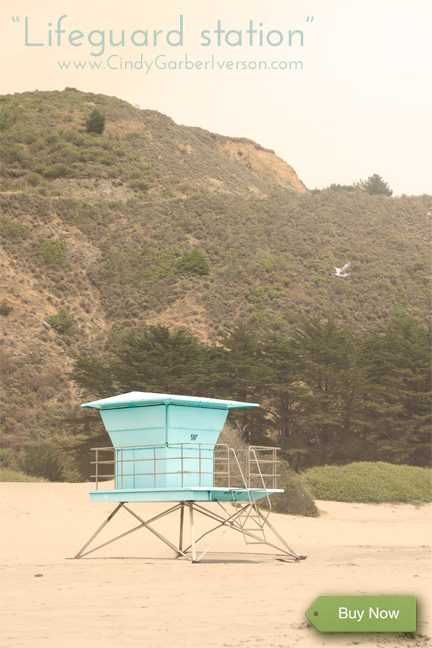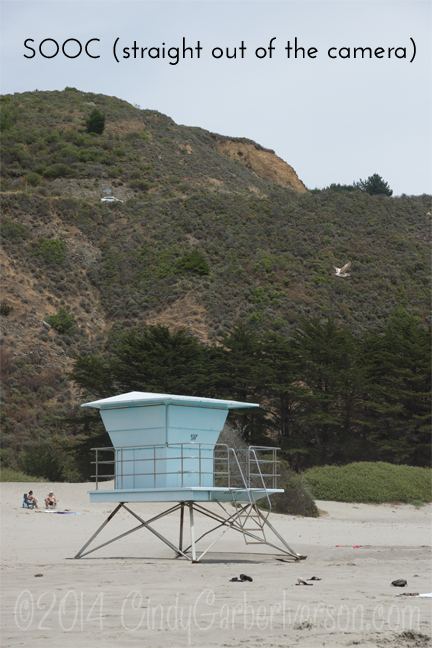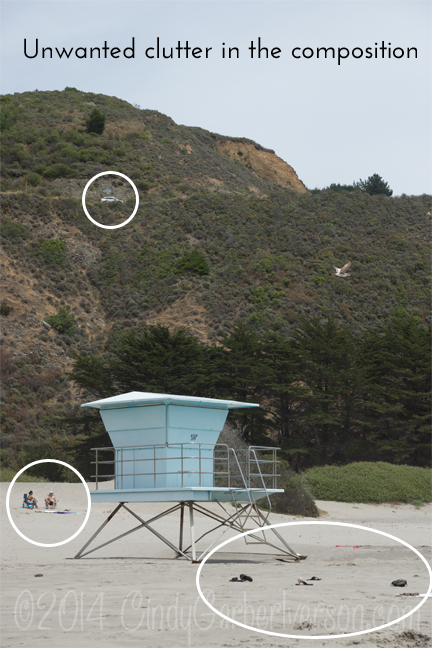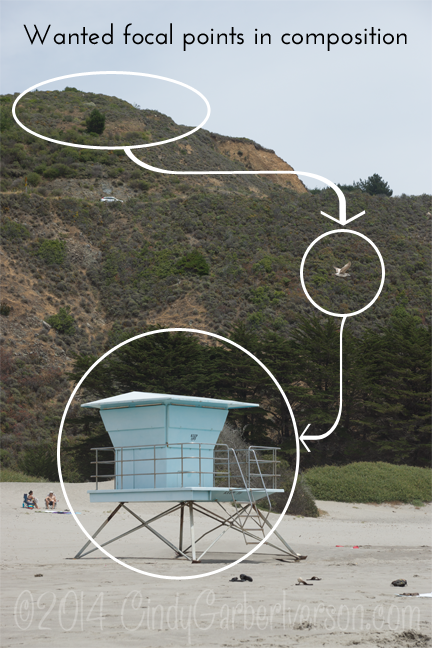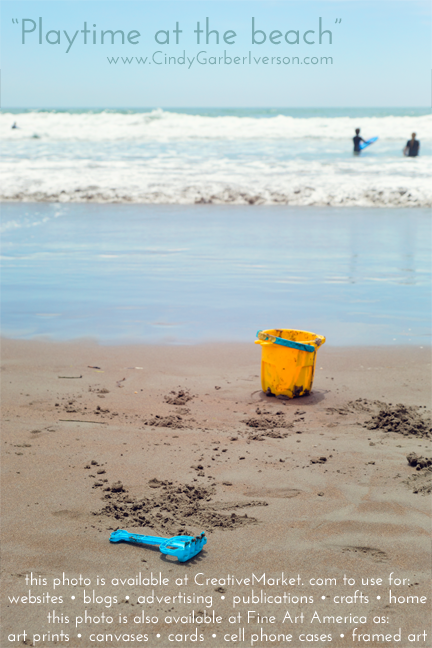I love vintage photographs of the San Francisco Bay Area, so when I found this particular image while browsing through a local antique shop I had to buy it. A sticker on the back of the photograph attributes Alfred P. Singer, a photographer in San Francisco in the 1950s-60s. Other than that, I’ve little to go on in identifying the location and circumstances of this photograph. Still… it intrigues me.
From the photograph, I can glean some clues:
- It’s a parade of some sort
- The side of the float says “Fruitvale” with a missing “L”. Fruitvale is a district of Oakland, California
- The side of the float has the letters “SGW”. I’ve found mention of a lodge or fraternal organization called “N.S.G.W.” in late 19th century and early 20th century newspaper articles. I’ve also seen it in old family photographs of Golden Gate Park. UPDATE: A friend on Facebook helped me out with this one. The initial stand for Native Sons of the Golden West.
- The large disc behind the woman is a huge replica of a gold pan. It reads “California the Golden 1850-1950”. The photograph is probably of a parade that occurred in 1950.
What I can find about Alfred P. Singer
When I did a search of documentation on Alfred P. Singer on the records on Ancestry.com, I found that he is listed as a commercial artist in room 335 of the Mourn Building in San Francisco in 1955. In 1959, Alfred and his wife Marcella are living at 2134 41st Avenue in San Francisco with his place of work being at 112 Market Street. He is again listed as a commercial artist. Other documents show that his wife’s name was spelled “Marzella”.
In February 1949, Alfred and Marzella are on the passenger list for the S. S. General W. H. Gordon arriving in San Francisco from Shanghai, China. It shows his age as 42 and her age as 38. Both are listed as “Austrian” with the destination address of 719 W. 180th Street, New York, New York. However, it looks like he never made it to New York. I wonder if he fell in love with the Bay Area and just decided this was home. He would have arrived in the Bay Area only the year prior to when he took the photograph of the parade float. I wonder what must have been going through his mind as he watched the parade go by in his new “hometown”.
It turns out that Alfred became a naturalized citizen in 1954. I found the document at FamilySearch.org. He was living at 3616 Sacramento Street in San Francisco by then.
According to multiple documents, Alfred’s birth date was 11 June 1906, and he died 6 January 1988. The California Death Index shows his full name as Alfred Peter Singer with his mother’s maiden name being Beigl. The U.S. Social Security Death Index shows that Alfred P. Singer’s last residence was San Francisco. It makes me happy to know that he stayed.
Identifying the buildings in the photograph
I haven’t been successful yet in identifying the building in the photograph. Fortunately, my husband is familiar with both downtown San Francisco and downtown Oakland (having worked in both places). Using Google street view, we should be able to identify the exact location. If anyone recognizes it before we do, please leave a comment and let us know.

